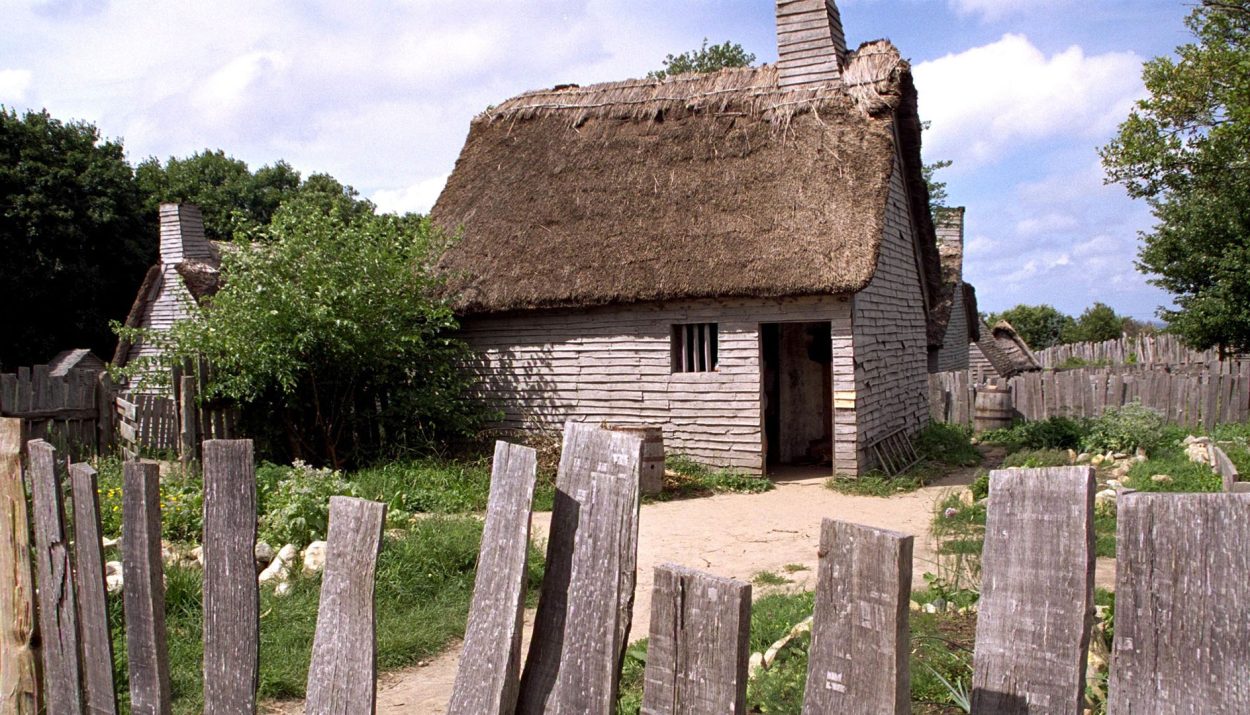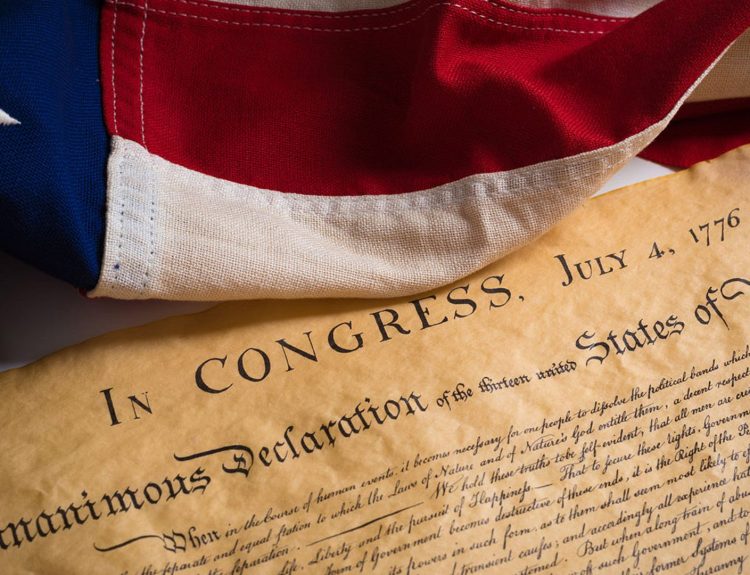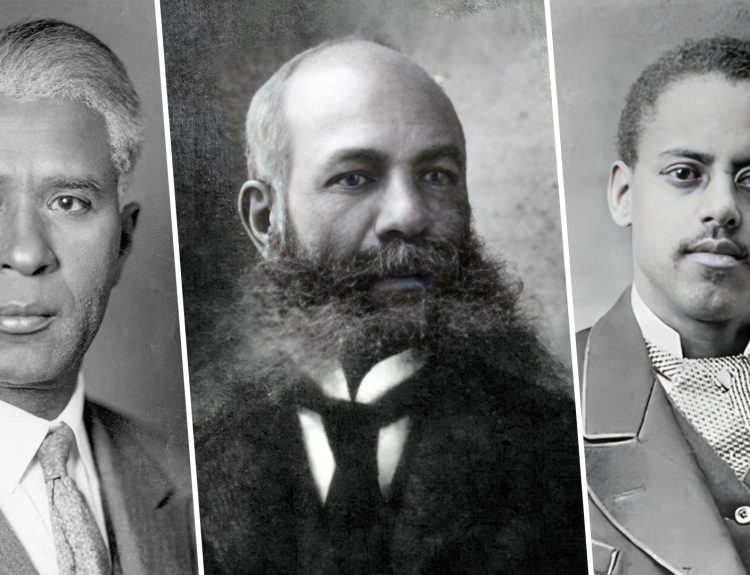The best way to really understand how people in the past lived is to take a glimpse into the places they called home. Fortunately, many of the oldest homes from the colonial and pre-Revolutionary War era in the United States are still standing today and have been converted into old home museums.
Historians and museum curators work hard to ensure that old home museums are accurate to the time period so that visitors can experience life as it was more than two centuries ago. Take a peek inside the doors of these 14 historic homes from America’s early history.
1. Mount Vernon – 1753, Virginia
The home of George Washington, the first president of the United States, is a grand Palladian-style wooden home that was first built in 1734 by Washington’s father, Augustine. After he took ownership of the plantation house, Washington added onto the home twice. A landmark of American history, this home is only about 15 miles outside of Washington D.C.
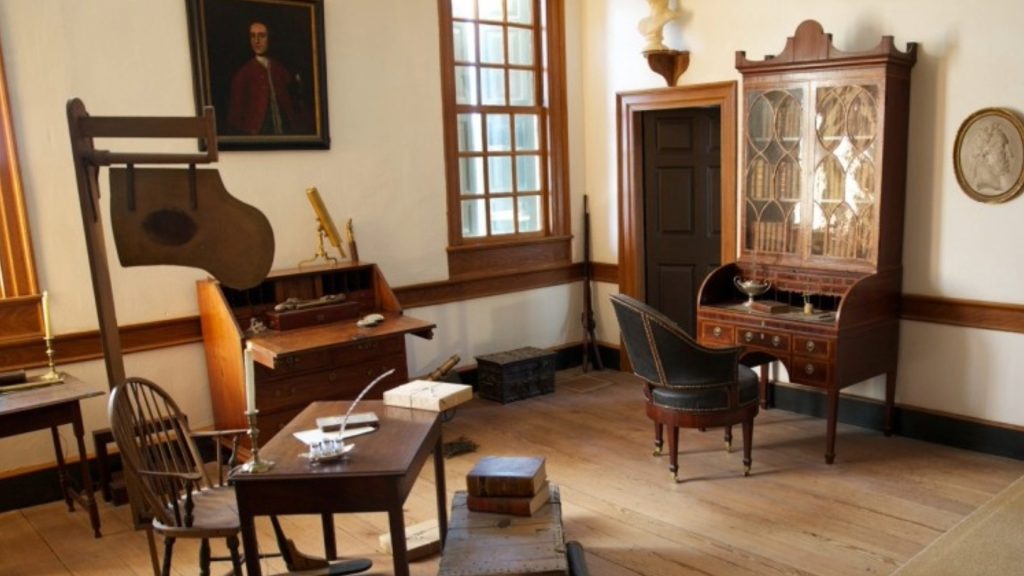
Today, guests to Mount Vernon can tour Washington’s home, view his private study, and admire the grand ballroom. There are original portraits of the Washington family on display, as well as the Key the Bastille which was ceremoniously presented to Washington in 1790 by the Marquis de Lafayette.
2.The House of the Seven Gables – 1668, Massachusetts
The Turner-Ingersoll mansion in Salem, Massachusetts, is known as the House of the Seven Gables because the home served as the inspiration for Nathaniel Hawthorne’s 1851 novel of the same name. The home was built in 1668 by a wealthy merchant, John Turner, and his wife, Elizabeth Robinson Turner. It is one of only a few First Period homes in the United States.
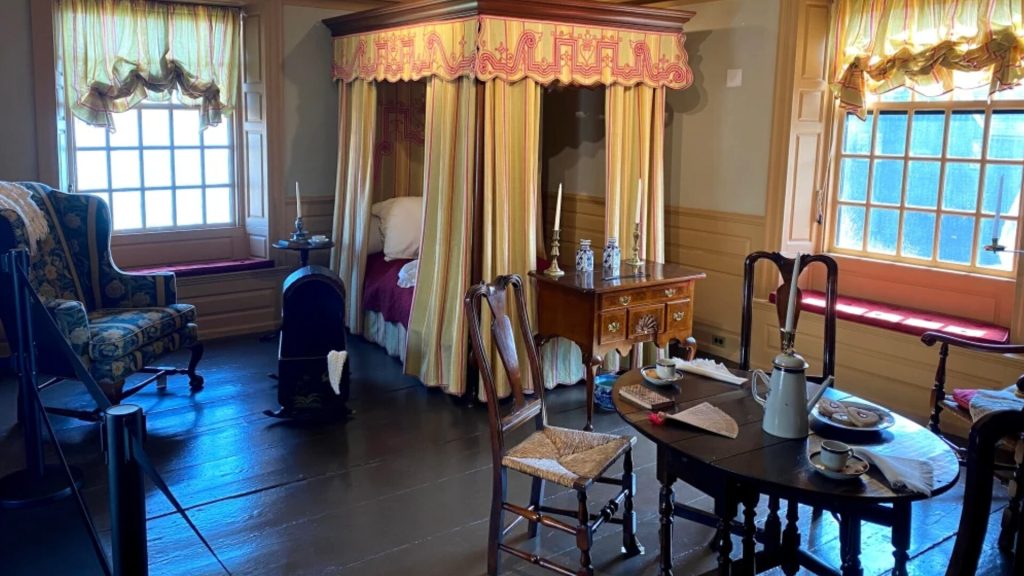
The Turner-Ingersoll mansion is open to the public, with tickets available for the grounds and to tour the interior of the home. During the month of October, Salem is inundated with tourists so visitors may have a difficult time getting tickets to tour the House of the Seven Gables.
3. The Hermitage – 1760, New Jersey
The Hermitage was built in 1760 in Ho-Ho-Kus, New Jersey. Seven years later, Ann Barstow DeVisme moved in with her five children. Ann’s daughter, Theodosia (yes, THAT Theodosia from Hamilton fame) hosted many of the movers and shakers of the Revolutionary War at The Hermitage – George Washington, James Monroe, Alexander Hamilton, Aaron Burr, and Peggy Shippen.
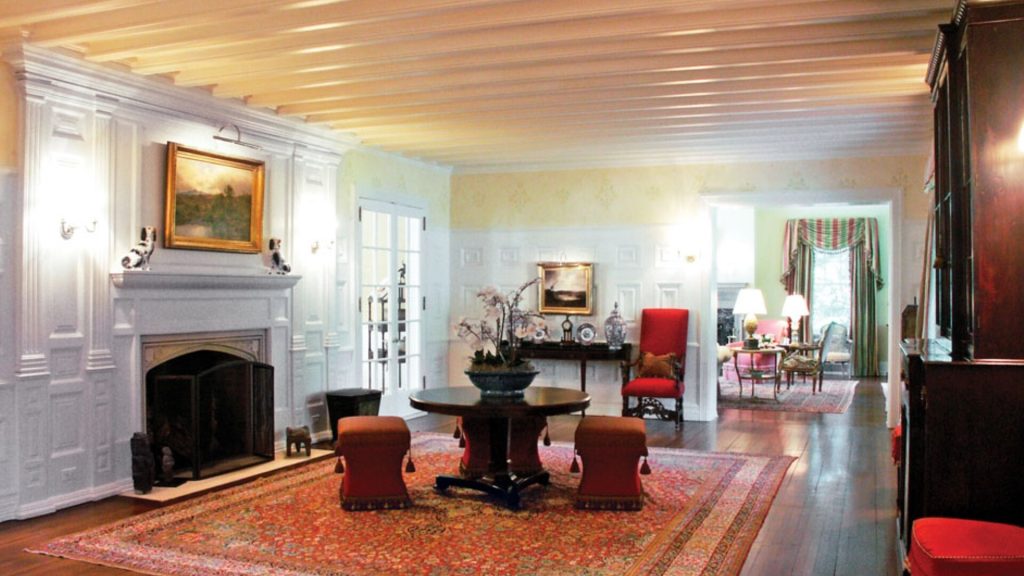
Theodosia and Burr struck up a friendship that eventually led to their wedding at The Hermitage in 1782. The home is now a museum and welcomes history buffs as well as fans of the hit Broadway musical, Hamilton.
4. The Tate House – 1755, Maine
Captain Gorge Tate, the Senior Mast Agent for the British Royal Navy, was sent to Portland, Maine in 1750 to oversee the shipping of white pine lumber. He had a stately Georgian Colonial house constructed for his family in 1755. And it still isn’t finished. The clapboard siding was never painted!
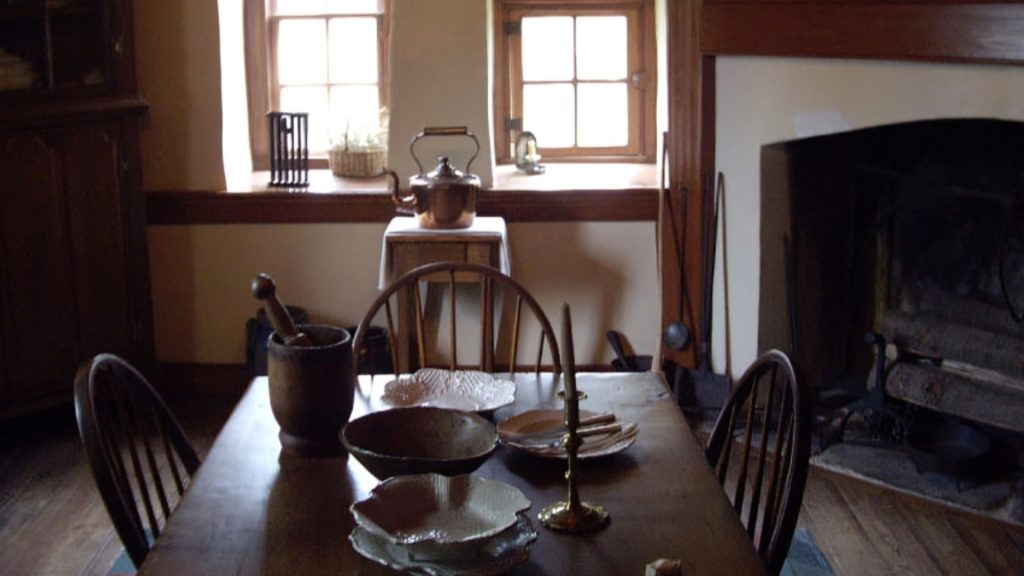
Today, the Tate House is the only old home museum in the Portland area that predates the Revolutionary War. Visitors can take a look inside at the posh period furnishings and stroll the lovely gardens.
5. The Betsy Ross House – 1740, Pennsylvania
A colonial-style home in Philadelphia – just steps away from the Liberty Bell and Independence Hall – has been established as an old home museum to commemorate the place where seamstress Betsy Ross allegedly stitched together the first American flag. The Betsy Ross House, which was built in 1740, is now one of Philadelphia’s most popular historic attractions.

Historians, however, doubt that this house was actually where Betsy Ross lived. They believe she lived in a home next door that has since been torn down. Nonetheless, visitors to the Betsy Ross House will get a good overview of what her living situation would have looked like.
6. The Wythe House – 1752, Virginia
George Wythe, one of the signers of the Declaration of Independence, was given the Georgian manor house in Williamsburg, Virginia, as a wedding gift when he married Elizabeth Taliaferro. Her father, Richard Taliaferro, built the home in 1752. George Washington used the house as his headquarters in September 1781 as he prepared for the Siege of Yorktown.
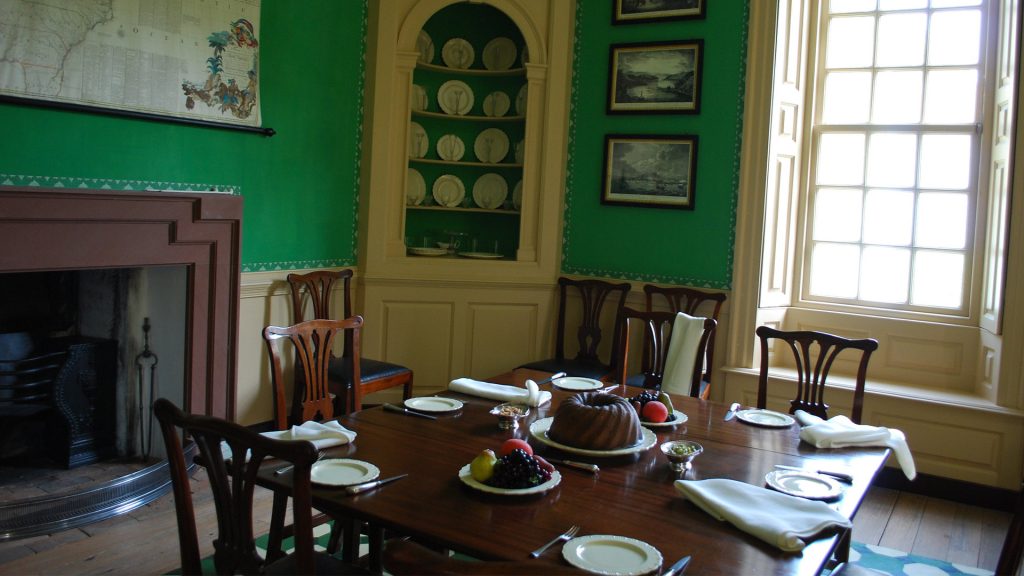
The grounds and the interior of The Wythe House welcome visitors. In fact, it is one of the highlights of the many historic homes in Colonial Williamsburg.
7. Heyward-Washington House – 1772, South Carolina
Thomas Heyward, Jr., who added his name to the Declaration of Independence, built a grand Georgian home in Charleston, South Carolina, in 1772. One of Heyward’s descendants, DeBose Heyward, penned the novel Porgy while living there. That play was later made into the musical, Porgy and Bess.
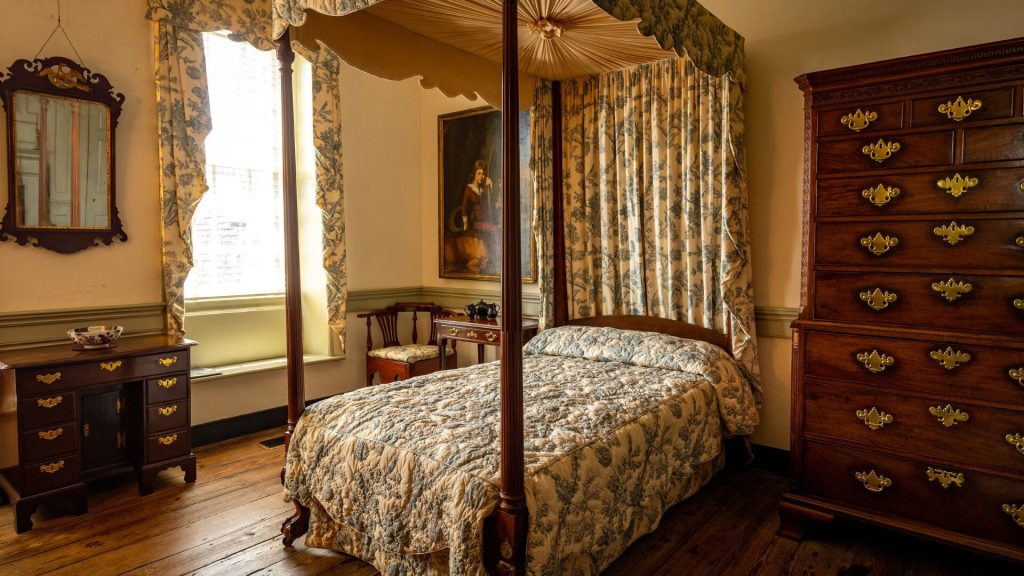
Visitors to the Heyward-Washington House can see locally made colonial furnishings, including the Holmes Bookcase. It is also the only area museum with a kitchen building from the 1740s that is open to the public.
8. The James Habersham House – 1771, Georgia
Also known as the Pink House, the 1771 Georgian mansion of one of Savannah’s founding families, that of James Habersham, Jr., was built on a land grant lot granted by the British Crown. The beautiful colonial architecture showcases the prominence of the early cotton industry.
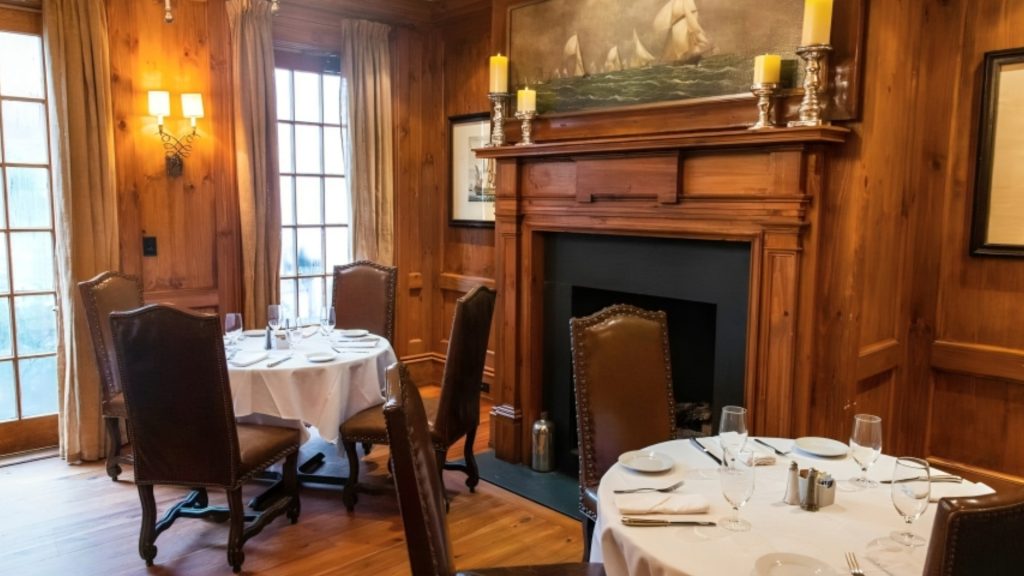
The Great Fire of 1796 destroyed about two-thirds of the homes in Savannah, but fortunately, the James Habersham House survived unscathed. We can’t say the same for James Habersham. He hung himself in the home in 1799. Today, the home is open for tours and also houses a tavern.
9. The Hezekiah Alexander Homesite – 1774, North Carolina
In 1774, Hezekiah Alexander built a stone home on his 600 acres of land in Charlotte, North Carolina, making it the oldest home still standing in the area. By the 1900s, the home was falling into disrepair. In 1969, the Hezekiah Alexander Home Foundation was formed to raise money for restoration and preservation efforts.
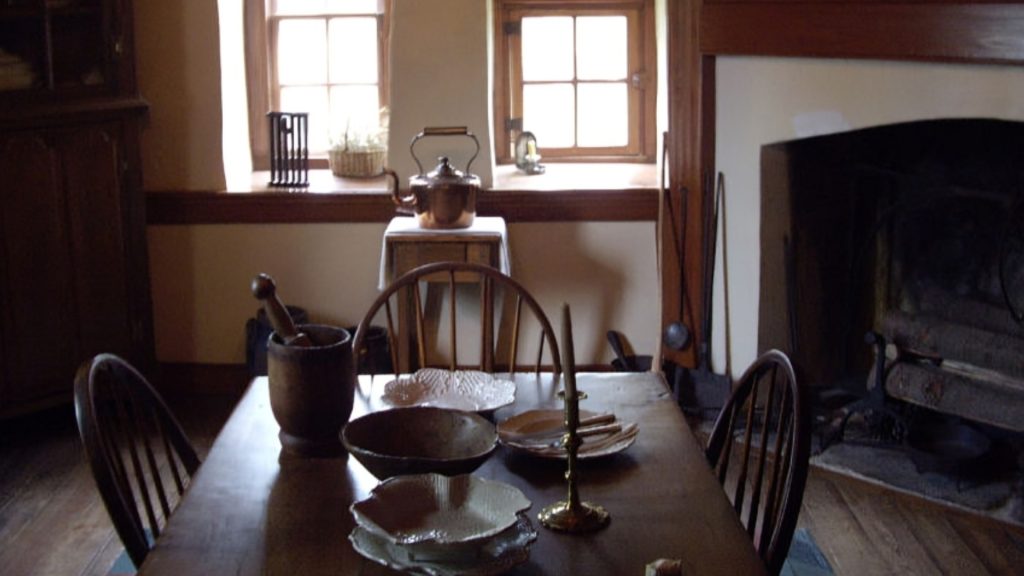
Thanks to their efforts, the home has been restored to its original glory and is open to the public. It is maintained by the Charlotte Museum of History.
10. White-Overton-Callander House – 1714, Connecticut
One of the oldest homes in Portland, Connecticut, the White-Overton-Callander House was built by Nathaniel White in 1714. The two-and-a-half story clapboard home was the fourth house built in Portland.

The home is listed on the National Register of Historic Places and open part-time as an old home museum.
11. Mount Harmon Plantation – 1700, Maryland
The Mount Harmon Plantation, built in Earleville, Maryland, in 1700, is a large, impressive, brick home on Chesapeake Bay. It sat on a 200-acre land grant from Lord Baltimore which was given to Godfrey Harmon. The architectural details of the home include pineapple motifs, scrolled pediment, and a curved staircase.
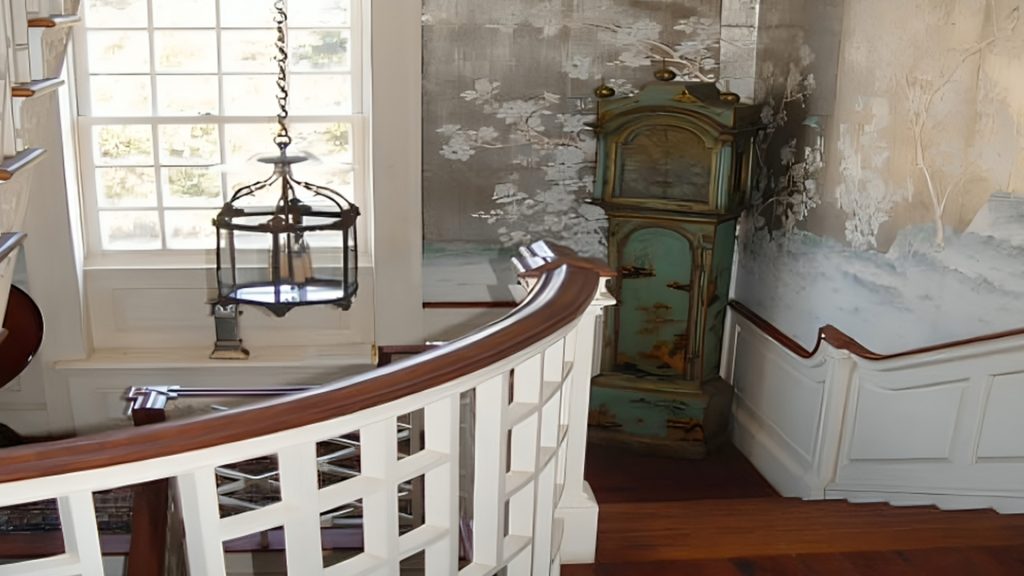
Since 1974, the Mount Harmon Plantation has been listed on the National Registry of Historic Places. It is currently a museum, and it’s doors are open to the public.
12. Wentworth-Lear Houses – 1760, New Hampshire
Two homes, the Wentworth-Gardner House and the Tobias Lear House, are two extraordinary examples of Georgian colonial architecture in Portsmouth, New Hampshire. These two homes, along with a third building, a warehouse, comprise a museum compound that overlooks the Piscataqua River.

The Wentworth-Gardner House was given to Thomas Wentworth and his new bride, Anne, by his parents, Mark Hunking Wentworth and Elizabeth Ridge Wentworth. It seems only fitting that the museum is also available as a wedding venue.
13. Hunter House – 1748, Rhode Island
Colonial Deputy Governor of Rhode Island, Jonathan Nichols, Jr. built the initial portion of the Hunter House in Newport, Rhode Island, in 1748. When the home was sold to Colonel Joseph Wanton Jr. in 1756, he expanded and enlarged the house. Wonton, the deputy governor of the colony, added another wing, a grand central hall, and a second chimney.
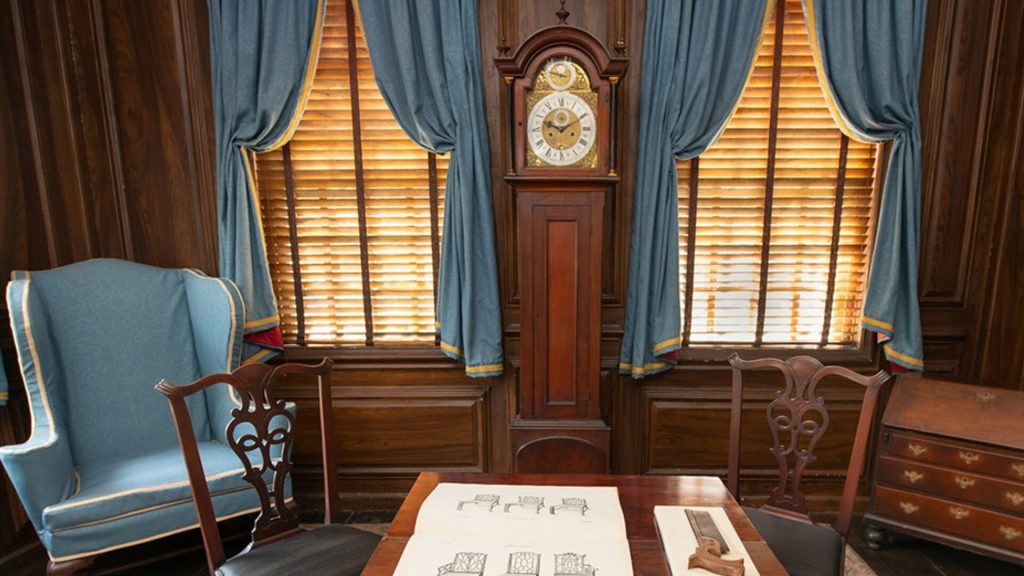
Now a historic home museum, the Hunter House allows visitors to experience the opulence of the pre-Revolutionary War era. Advanced reservations for guided tours are required to visit the home.
14. Monticello – 1772, Virginia
Monticello, built in 1772 and located near Charlottesville, Virginia, was the home of Thomas Jefferson, the third President of the United States and the author of the Declaration of Independence. Jefferson, who dabbled in architecture, drafted the plans for Monticello himself.
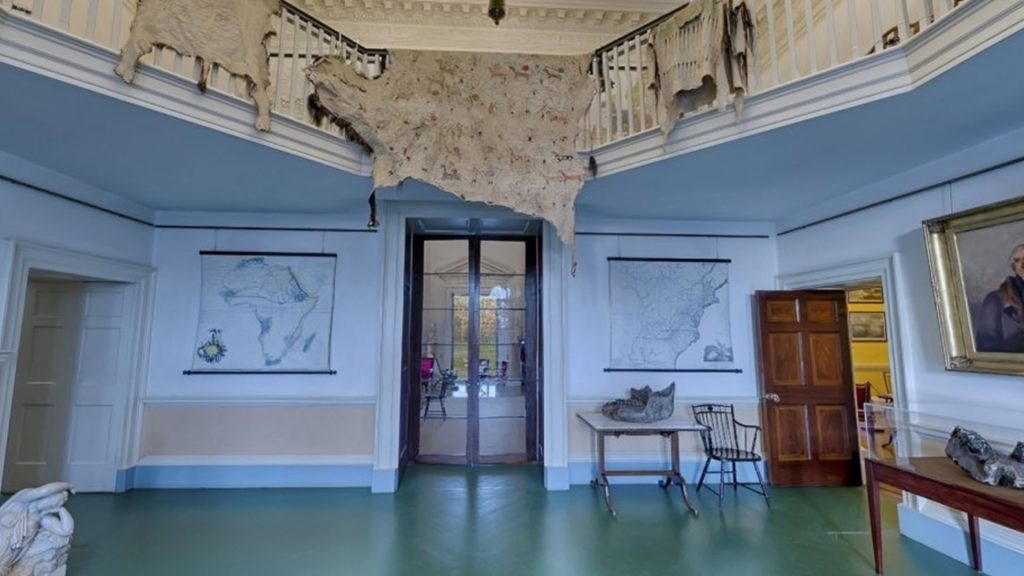
The neoclassical building is unique in its use of skylights and its unusual octagonal dome. Monticello attracts thousands of visitors each year. As an old home museum, Monticello gives guests a glimpse into the homelife of one of the founders of the United States.

